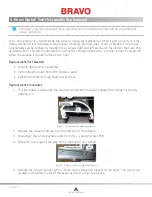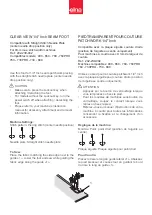
224 of 271
quality performance of the machine and helps to identify quality and functional issues. In the long run,
using the burn-in test after major repairs will save the customer a significant amount of money in terms
of service calls and additional diagnostic work.
To burn in the machine, refer to the following procedures.
Test Sew Outs:
Test sew outs should be conducted after all major repairs, when a machine is reconfigured, and when
major adjustments are made to a machine. This includes, but is not limited to:
• replacements of motors, sensors, harnesses or the main PCB;
• replacement or retensioning any of the belts;
• all service calls made by service technicians.
Several small test designs have been created to test for specific functions. This reduces the amount of
labor that a customer will be charged for. The main test design (AMPASSxxx) has been broken down into
smaller designs that are focused on specific machine functions. AMPASSxxx test design should be run on
a machine when a repair has affected all or most of the machine functions. However, if you do some-
thing simple, such as adjust or replace the grabber blade or the trimmer stepper motor, it is only neces-
sary to run AMTRIMxxx design (tests for trimmer problems). It is strongly recommended that the appro-
priate test sew outs be run to validate any repair or major adjustments to the embroidery machine when
it affects the functionality of the machine.
For instructions on test sews refer to the Test Designs section.
Table of Contents
















































